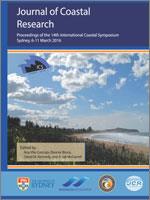Lee, J.; Cho, W.C., and Lee, J.L., 2016. The Application of a Rip Current Warning Decision-Process System, Haeundae Beach, South Korea. In: Vila-Concejo, A.; Bruce, E.; Kennedy, D.M., and McCarroll, R.J. (eds.), Proceedings of the 14th International Coastal Symposium (Sydney, Australia). Journal of Coastal Research, Special Issue, No. 75, pp. 1167 - 1171. Coconut Creek (Florida), ISSN 0749-0208.
Rip currents have the potential to pull swimmers into deep water, beyond offshore sand bars, posing a significant danger to beach goers worldwide. At Haeundae Beach in Busan, a south eastern region of South Korea, many rip current events have recently occurred, resulting in a number of people requiring rescue from these fast moving, seaward currents in 2014. The main objective of this study was to provide a warning decision-process for the occurrence of rip currents, to aid in the protection of human life in the areas where these rip currents occur. The rip current warning decision-process system developed in this work consists of both the NERiPS-H (Nearshore Rip current Prediction System for Haeundae Beach) and HAECUM (HAEundae Current Model) systems. By combining the predictive index model (NERiPS-H) and the numerical model for rip current forecasting (HAECUM), rip currents were forecasted using wave and wind data, along with forecasting information. Using this system, it possible to provide a 72-hour rip current forecast, which was made available on the KMA website. Four warning levels were chosen for forecasting of rip current occurrences by the KMA.





